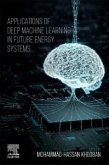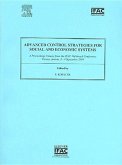

Gebundenes Buch
2024
28. Juli 2024
Springer / Springer Nature Switzerland / Springer, Berlin
978-3-031-64919-6
| eBook, PDF | 129,95 € |
eBook, PDF
27. Juli 2024
Springer International Publishing
Ähnliche Artikel

Broschiertes Buch
The Puerto Rico Study
18. November 2024
Now Publishers Inc

Broschiertes Buch
20. Mai 2024
Elsevier Science


Broschiertes Buch
21. August 2024
Elsevier Science

Broschiertes Buch
Fundamentals, Technologies, and Solutions
23. Mai 2024
Elsevier Science

Broschiertes Buch
12. Juni 1998
Elsevier Science

Broschiertes Buch
1. Januar 2006
Elsevier Science


Broschiertes Buch
4e Analysis, Process Integration, and Materials
9. September 2024
Elsevier Science

Ähnlichkeitssuche: Fact®Finder von OMIKRON
